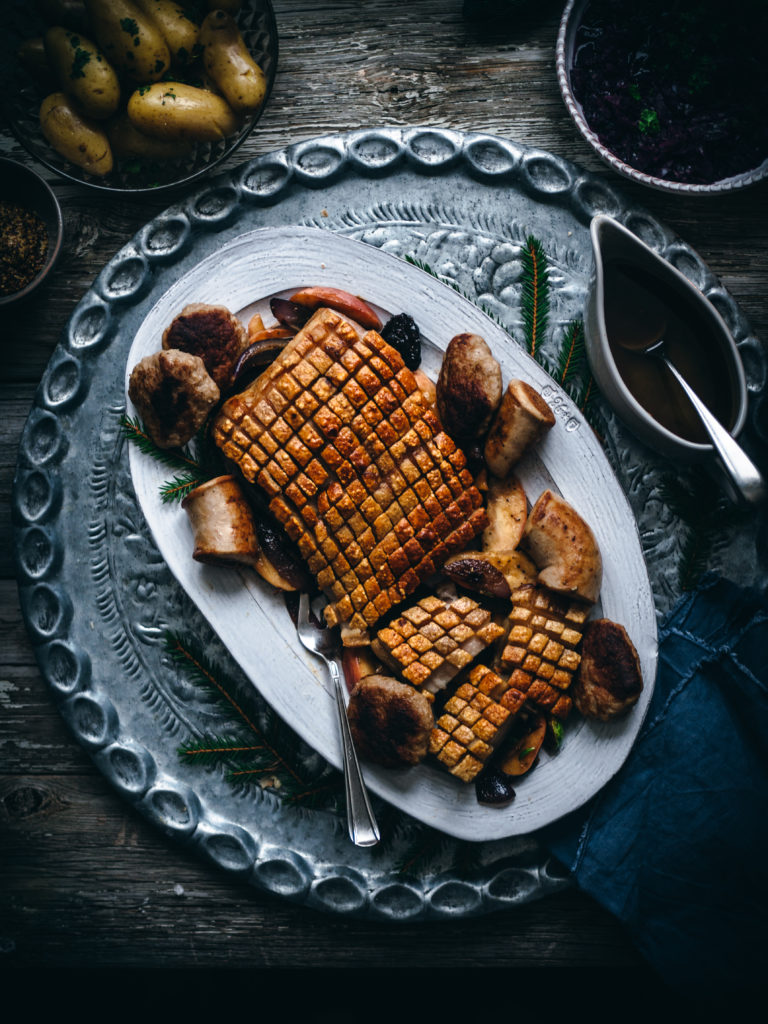
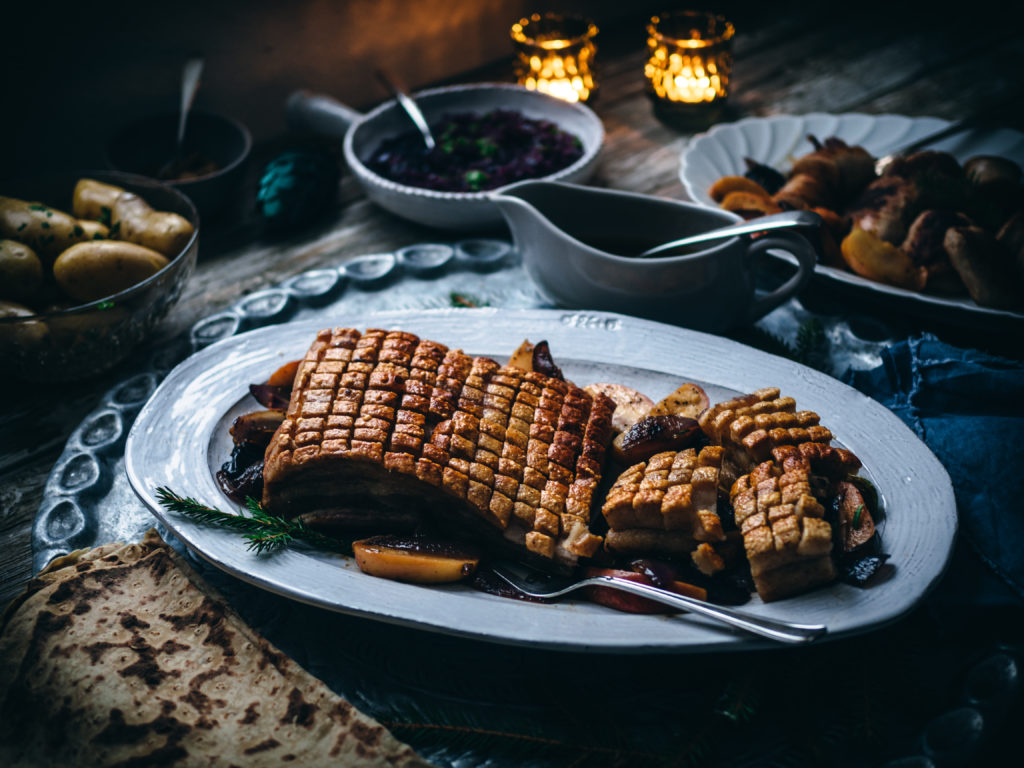
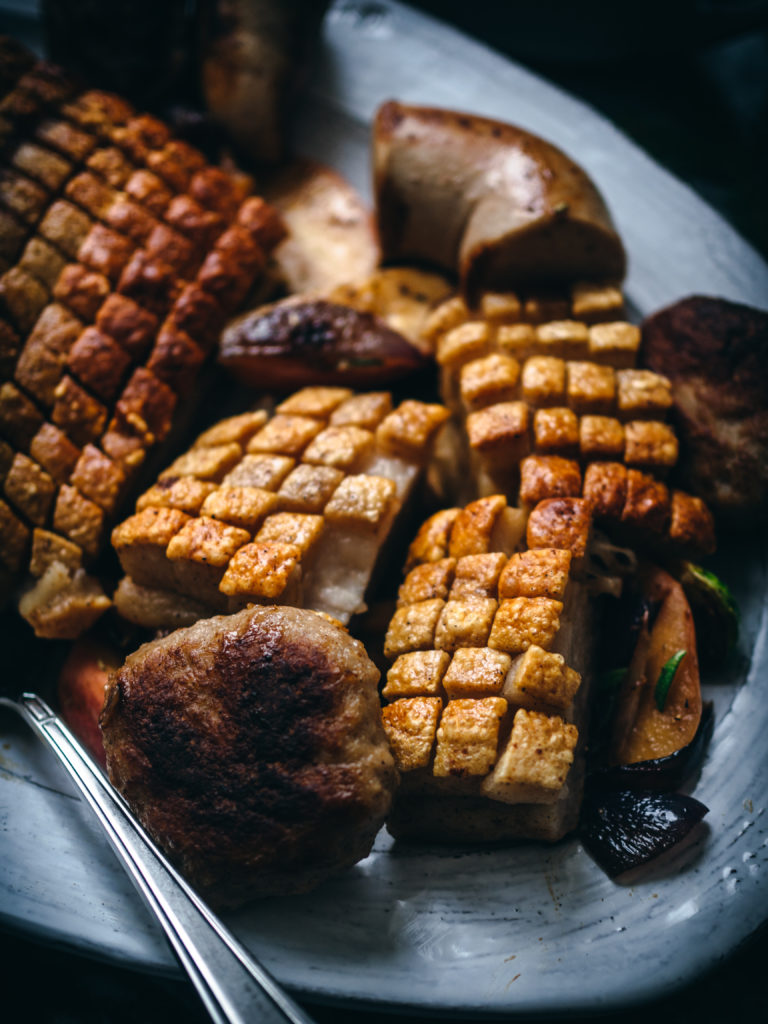
Ribbe, or roasted pork belly, is the most popular Norwegian Christmas dish in the country, just above traditional cured lamb ribs (pinnekjøtt). Yet, this holiday dish of crackling fat and pork is not an old dish in Norway like pinnekjøtt is. In fact, it probably arrived in the 18th century, perhaps making its way from Denmark, and was found in eastern Norway, Trøndelag and the flatter regions where there was more emphasis on grain production and pig farming.
The history of Norwegian Christmas food is a mix of superstition, religion, and finding good ways to use natural resources. Before the Reformation in 1537, Catholicism meant meat was not allowed during Advent or on Christmas Eve. Therefore, there was (and is still to this day for some) the tradition of fresh fish, lutefisk, and persetorsk (pressed cod) on Christmas Eve. The day after Christmas Eve, the fast could be broken and meat was served. Since winters were extremely harsh, food was prepared to sustain people throughout the months and prevent starvation. Therefore, the meat on offer was exclusively cured meat, since fresh meat could not be stored. This is where pinnekjøtt came about. Pork belly, on the other hand, arrived much later in Norway as a gloriously modern meal for the wealthy.
The reason pig production in Norway was not possible for so long is because pigs are in direct competition with humans and food. Once there was access to food waste, it was possible to keep them. And that is all thanks to the potato.
With the introduction of the potato into Norwegian agriculture in the mid 1700s, it became possible to farm pigs. Therefore, sources say that the spread of pigs for consumption is intrinsically linked to the potato. And since grain production and pig farming was centralized to the plains, there was an abundance there compared to the rest of the country. That’s also why there was such a split between the regions on what they would eat for the Christmas meal (team pinnekjøtt vs. team ribbe vs. team cod).
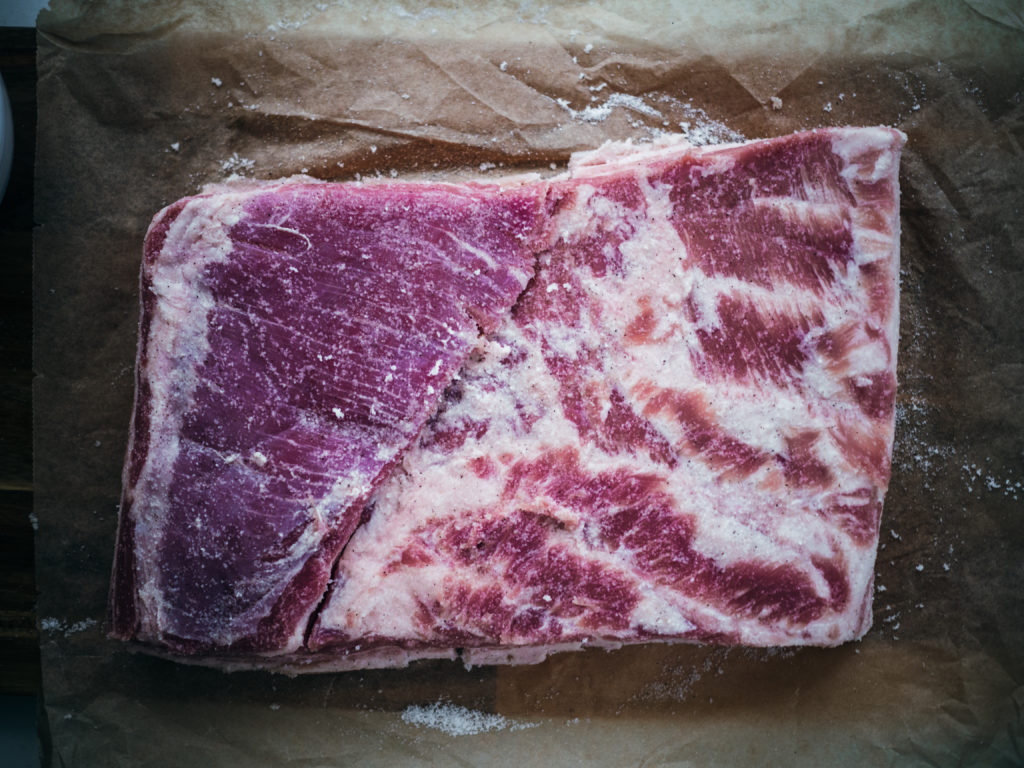
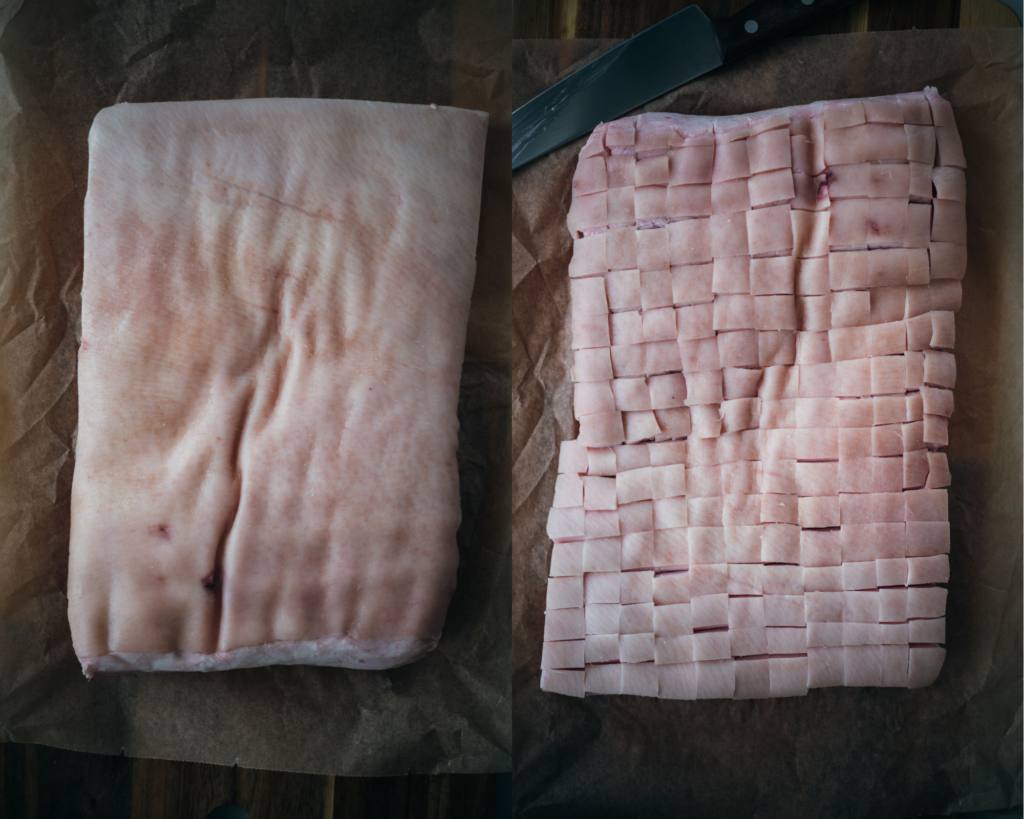
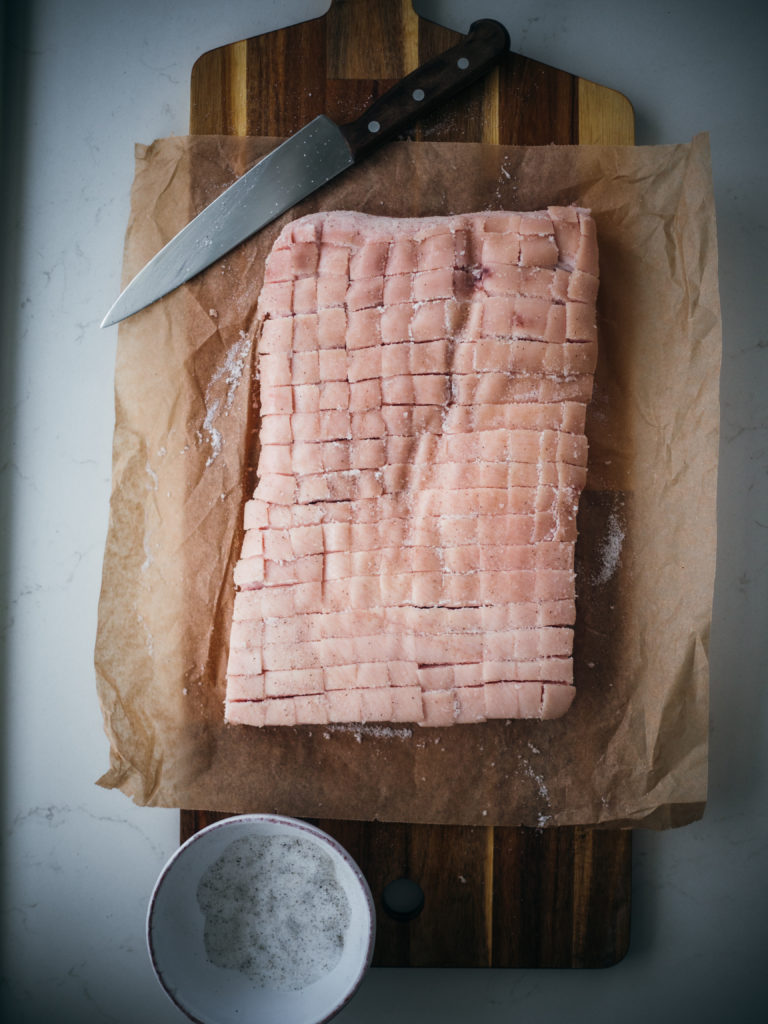
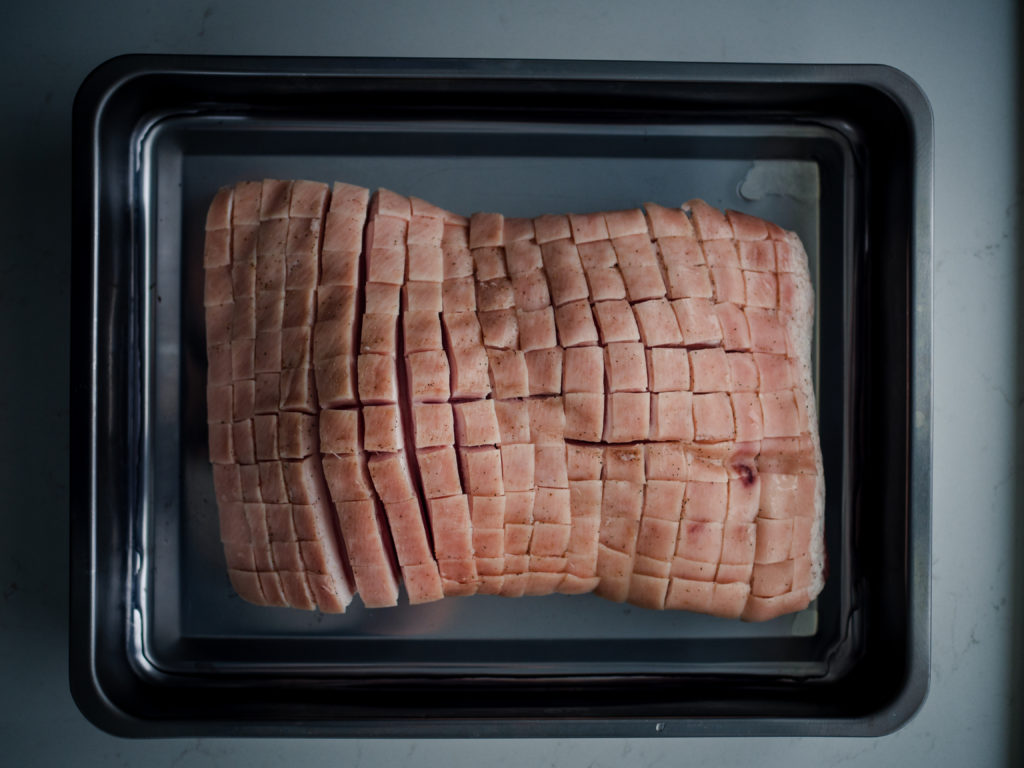
The appeal of roasted pork belly was mainly because it was new, and fresh meat was the trend of the day as it didn’t require curing. But, of course, it was limited to the wealthy as it also required the use of an oven rather than the usual pot over the fire. The stove wasn’t common for most people until the end of the 19th century.
It’s thought that serving ribbe for Christmas dinner didn’t really kick off for most people until later in the 20th century, when it was more common to have pigs on the farm. Skip forward to today, and pork belly is the most popular dish in Norway for Christmas dinner. When it’s served, it comes with a myriad of choices for sides, which you’ll find below.
The most important part of ribbe is the crispiness of the pork skin. You’re looking for that perfect crunch when you bite into it. The meat should be juicy and just the right amount of seasoning. It’s rich, fatty, and indulgent – arguably the reason why more and more people gravitate toward this for their holiday meal.
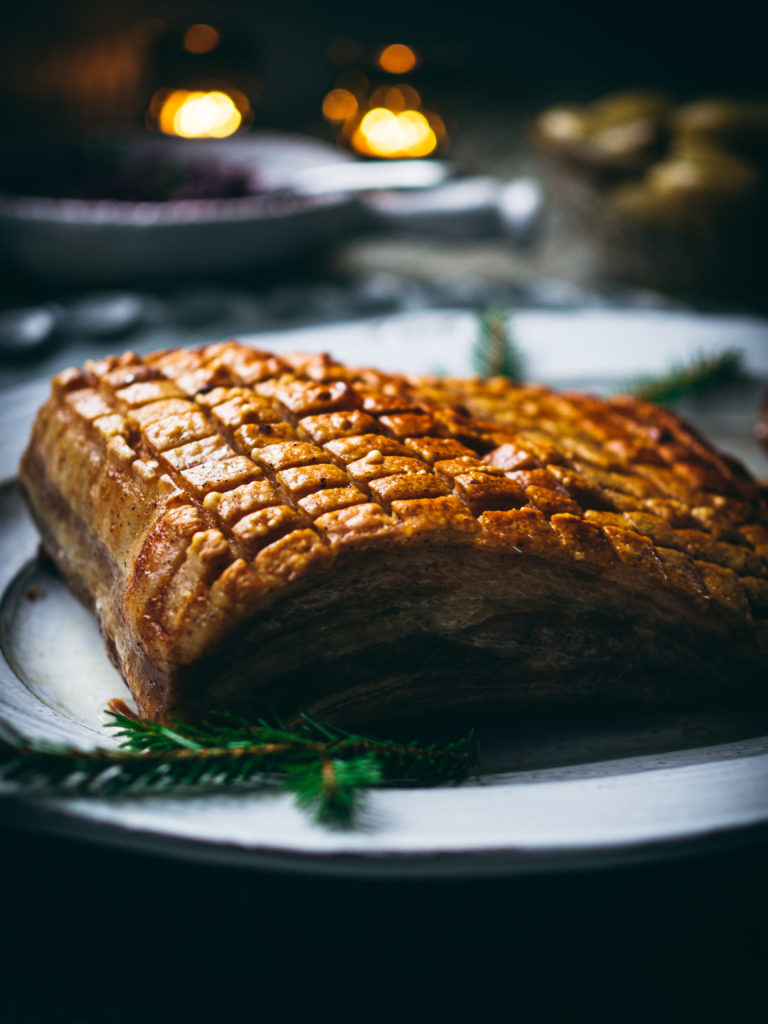
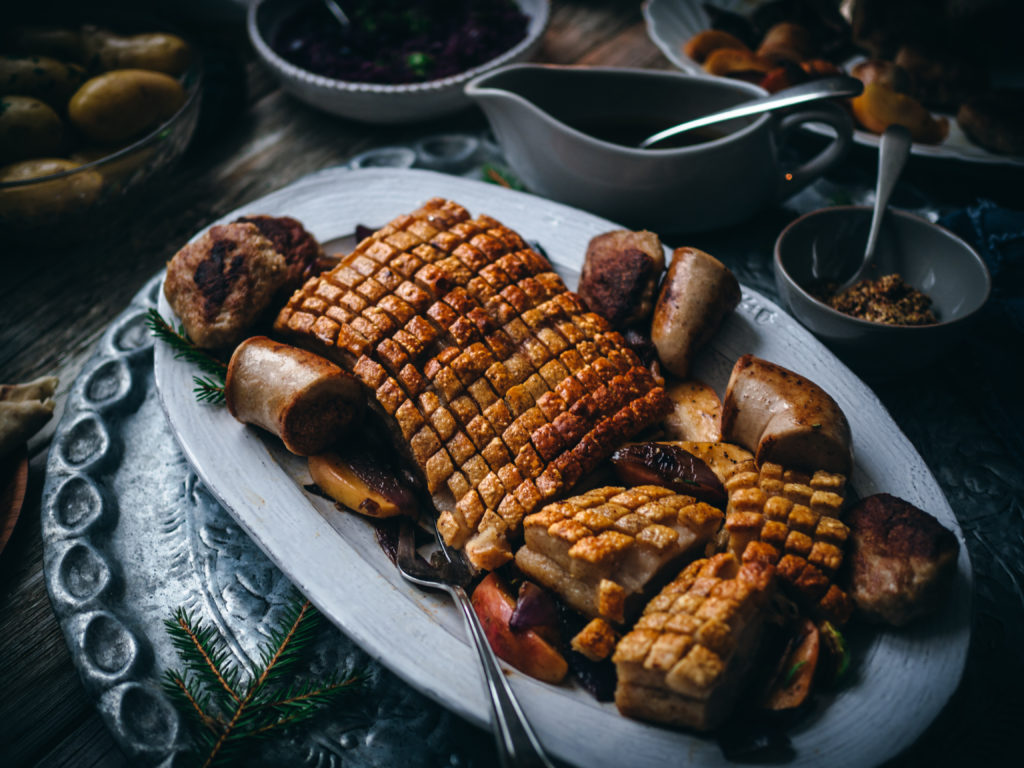
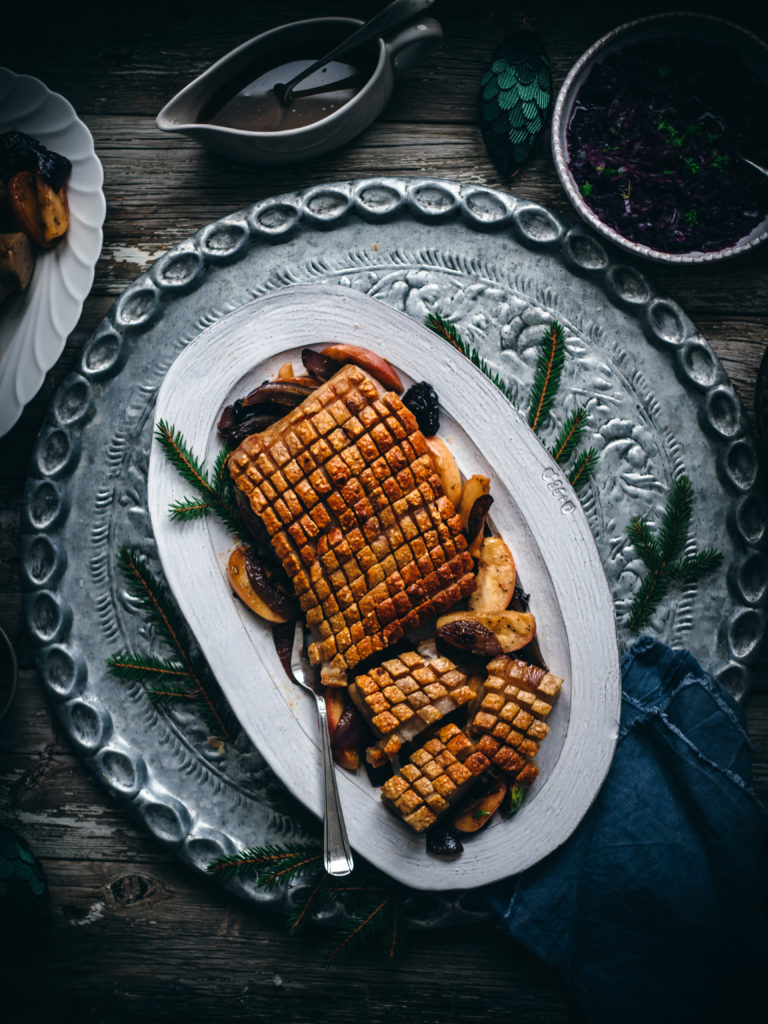
Norwegian Roasted Pork Belly (Ribbe)
Serves 4
- 4 ½ pounds (2 kg) pork belly, about 1 pound (400-500 g) per person
- 3 teaspoons salt
- 1 ½ teaspoons ground black pepper
- ½ large onion
- ¾ cup (180 ml) water
Using a sharp knife or utility knife, slice the pork belly through the fat and slightly into the flesh in a square pattern, with the squares being about ½ inch (1 ½ cm) in size.
In a small bowl, combine the salt and pepper. Using your hands, rub the salt and pepper mixture liberally on top of the fat and inside the cracks, then rub some along the sides of the belly and underneath. Wrap the whole belly in foil and place in the refrigerator for at least 1 day and up to 3 days.
Preheat the oven to 450ºF (230ºC).
Remove the pork belly from the refrigerator and take away the foil. Place the pork belly, skin side up, in a large roasting pan. Lift the pork belly and place the half onion, cut side down, underneath in the center of the pork belly, so the middle is slightly higher to allow the fat to run down while it’s cooking. (You can also use a ball of foil instead of the onion). Pour the water into the pan. Cover with foil, ensuring it doesn’t touch the pork belly to prevent sticking, and seal the edges of the foil around the pan to ensure proper steaming. Place in the middle of the oven and steam for 45 minutes.
Remove the foil and lower the oven temperature to 400ºF (200ºC). Continue cooking the pork belly for 1 to 1 ½ hours longer, until the skin is golden brown and crispy. If parts of the skin are not as crispy as the others, cover the crispy parts with foil to prevent over-cooking/burning, increase the heat, then cook until the desired crispiness– being sure to keep an eye on it so it doesn’t burn, it won’t take long.
Remove the pork belly and let it rest for about 20 minutes before serving. To serve, cut into large pieces and use the drippings from the pork belly to make a gravy.
For a full meal with all the fixings, serve with:
- Christmas pork meatballs (medisterkaker)
- Christmas sausages (julepølser)
- Honey Sautéed Apples, Prunes, and Onions (honningstekte epler, svisker og løk)
- Sweet and sour braised red cabbage (rødkål)
- Sweet and sour green cabbage (surkål)
- Gravy (saus)
- Boiled potatoes with butter and herbs
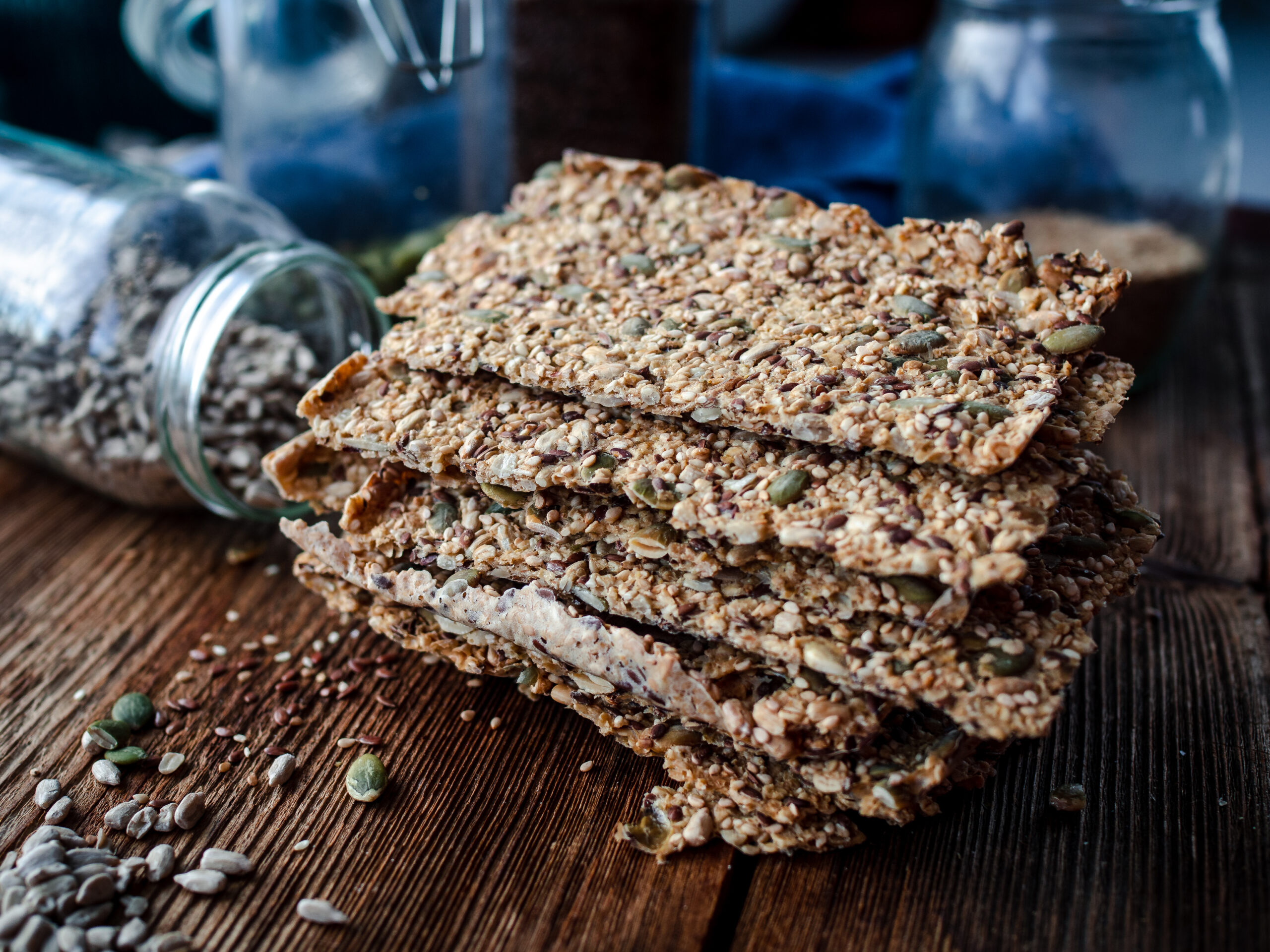


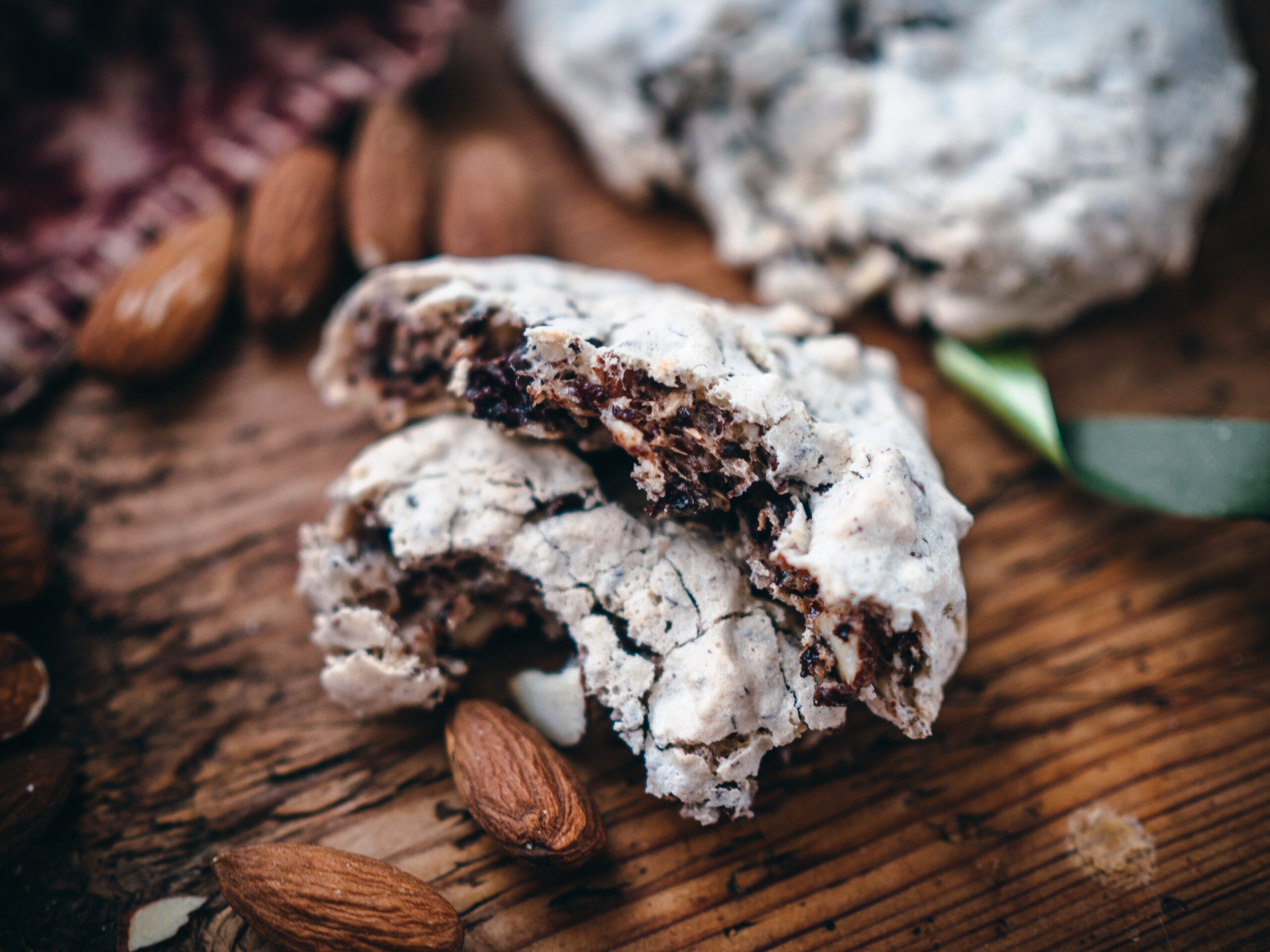

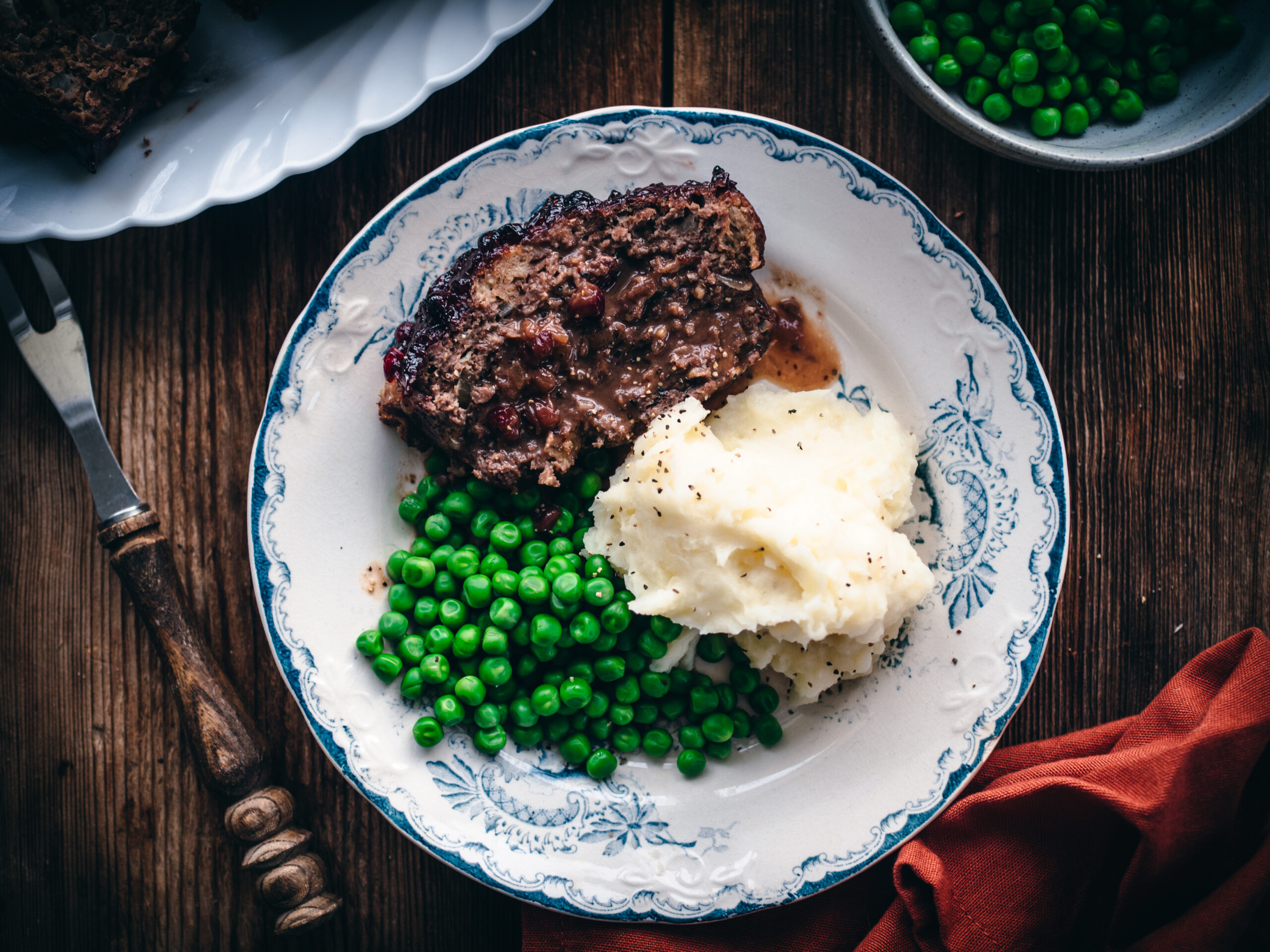
I made this last Christmas, and am planning to make it again. So simple, and so delicious. I served it with braised red cabbage and mashed potatoes. I was looking for something different from the usual American holiday proteins: ham, turkey, rib roast. This was a perfect alternative that was still indulgent and festive.
I’m really happy you made this and enjoyed it! Happy holidays!